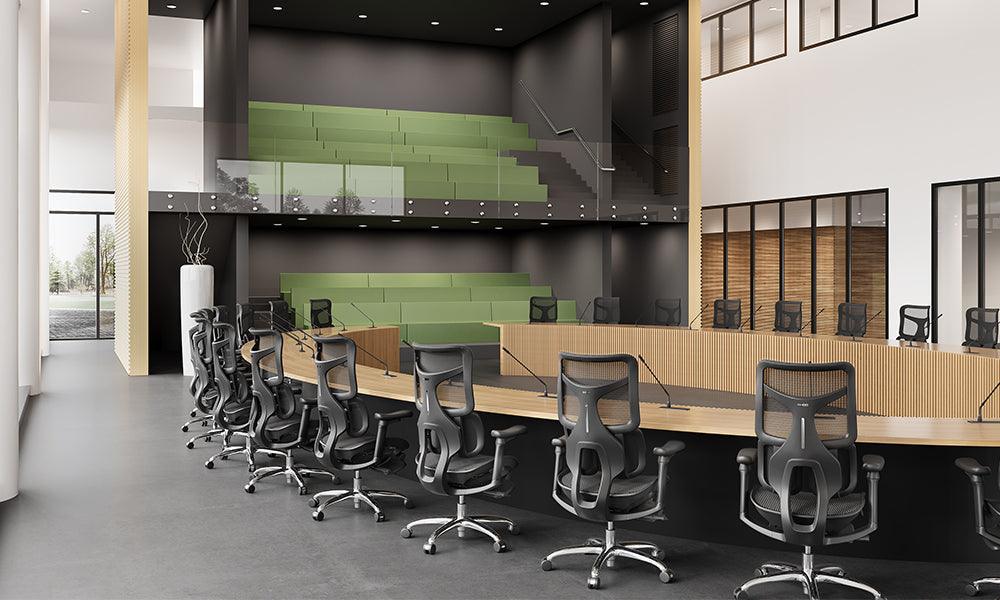In the modern workplace, where hours are spent hunched over desks and screens, the importance of ergonomic office chairs cannot be overstated. These chairs are designed not only to provide comfort but also to support good posture, preventing long-term health issues such as back pain and musculoskeletal disorders. However, not all ergonomic chairs are created equal, and the materials and build quality play a pivotal role in determining their longevity and effectiveness.
Material Matters:
The materials used in the construction of an office chair can significantly impact its durability and comfort over time. Here's a breakdown of some common materials and their effects:
Frame: The frame serves as the foundation of the chair and is typically made of metal or high-quality plastic. A sturdy metal frame, such as steel or aluminum, provides excellent support and durability, ensuring that the chair can withstand regular use without losing its structural integrity.
Seat Padding: The padding material used in the seat cushion affects both comfort and longevity. High-density foam is often preferred for its resilience and ability to retain its shape over time. Additionally, breathable fabrics like mesh can help prevent moisture buildup and maintain the chair's freshness.
Armrests: Armrests made of durable materials such as reinforced plastic or metal are essential for providing support and stability. Adjustable armrests allow users to customize their position, reducing strain on the shoulders and wrists.
Upholstery: The upholstery material not only contributes to the chair's aesthetic appeal but also affects its durability and ease of maintenance. Leather, faux leather, and high-quality fabrics are popular choices for their durability and comfort. However, it's essential to consider factors such as breathability and resistance to wear and tear.
Build Quality:
In addition to the materials used, the build quality of an ergonomic office chair plays a crucial role in determining its longevity. Here are some key aspects to consider:
Precision Engineering: Chairs that are meticulously engineered with attention to detail are more likely to withstand the rigors of daily use. Components such as screws, bolts, and welds should be of high quality to ensure stability and longevity.
Adjustable Features: Ergonomic chairs with adjustable features such as seat height, lumbar support, and tilt mechanism allow users to customize their sitting experience according to their preferences and body type. However, it's essential that these adjustable components are well-built and can withstand frequent adjustments without compromising their functionality.
Weight Capacity: The weight capacity of an ergonomic chair is an important consideration, especially in a commercial setting where chairs may be subjected to heavy use. Chairs with higher weight capacities are typically built to be more robust and durable, ensuring they can accommodate a wide range of users without risk of damage.
Warranty and Customer Support: A reliable warranty and responsive customer support are indicators of a manufacturer's confidence in the quality of their product. Investing in a chair with a solid warranty can provide peace of mind and assurance that any potential issues will be promptly addressed.
When it comes to ergonomic chairs, the material and build quality are critical factors that directly impact longevity and user satisfaction. Investing in a chair constructed from high-quality materials and built with precision engineering can lead to years of comfortable and ergonomic seating, ultimately improving productivity and well-being in the workplace. So, before you make your next office chair purchase, be sure to carefully consider the materials and build quality to ensure you're getting the best value for your investment.



































